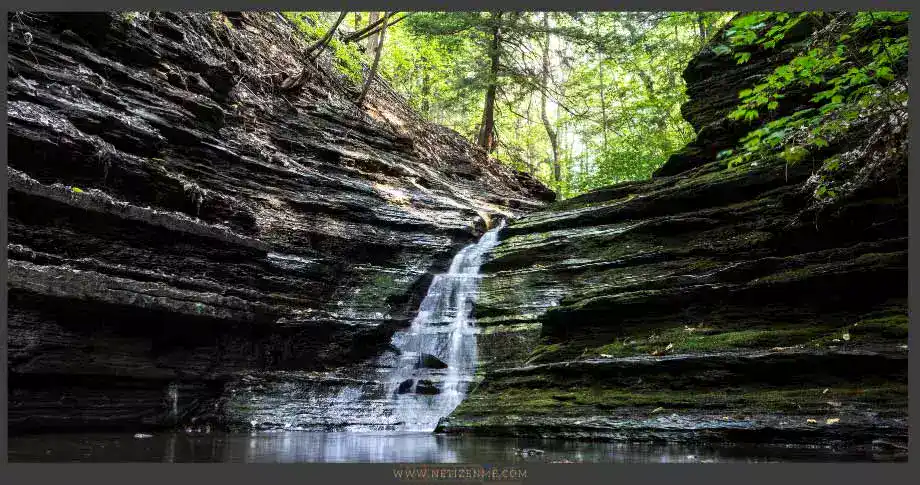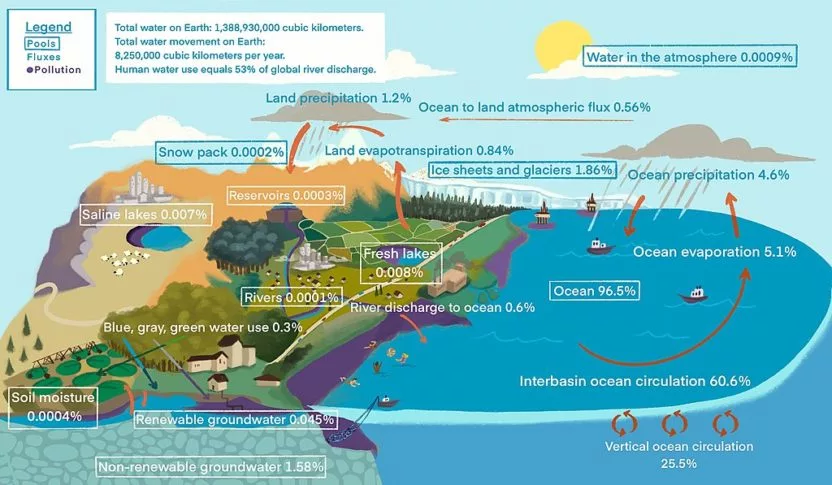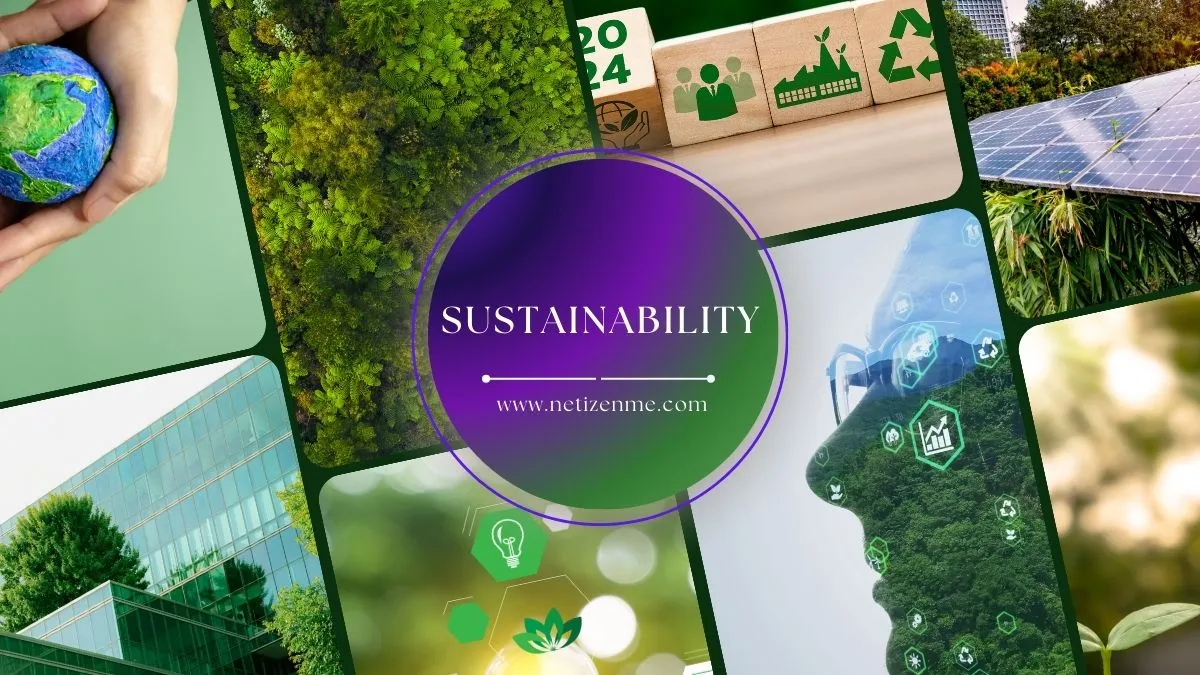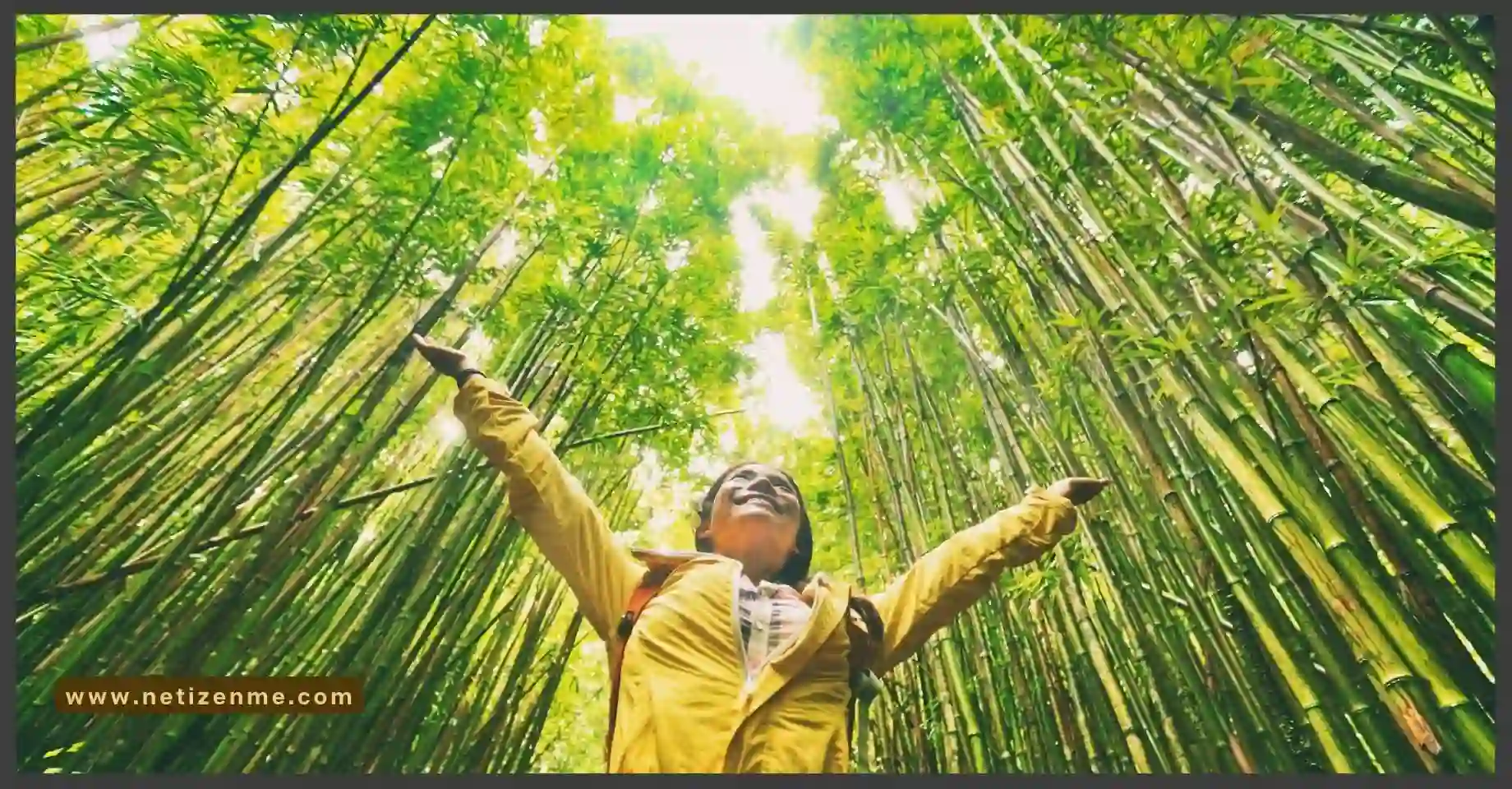
Water-Material Cycle and How Our Everyday Life Choices Impact it
Water is one of the main elements that serve as the basis of all life on earth and clean water is essential for the majority of multicellular living organisms such as humans, plants, and other animals. what is the water material cycle? How our everyday life choice impact it?
What is the water material cycle?
BBC Bitesize guide describes the water material cycle as the materials on Earth cycle between living organisms and the environment. Microorganisms are vital for these cycles. They break down dead matter and release the materials back to the environment.
The water cycle shows the cycling of water within the Earth and atmosphere. It is an intricate system that includes many different processes. National Oceanic and Atmospheric Administration describe the water material cycle as below:
Water in liquid form evaporate into water vapour, condenses to form clouds, and falls back to earth in the form of rain and snow. Water in different phases moves through the atmosphere. Liquid water flows across the land, into the ground and percolation, and through the ground. Groundwater moves into plants and evaporates from plants into the atmosphere. Solid ice and snow can turn directly into a gas. The opposite can also take place when water vapor becomes solid.

The most considerable impacts we make on Water-Material Cycle
Several human activities can impact the water cycle: damming rivers for hydroelectricity, using water for farming, deforestation, and the burning of fossil fuels. (2)
There are a lot of many ways in which we are affecting the water-material cycle. So we must look at what we can do on the individual level, making minor changes in our day-to-day life to facilitate the natural water cycle which would help to sustain life on earth and also contribute to a much better quality of life in general.
The water cycle diagram is a central icon of hydro science, but misrepresenting the ways in which humans have influenced this cycle diminishes our awareness of the looming global water crisis, says Professor David Hannah, UNESCO Chair in Water Sciences at the University of Birmingham.
What we can do on as an individual and how it will change our life
Plant trees
Trees have a very important role in the water cycle. They need water to sustain their own life, and then return it to the atmosphere as vapor or to the soil as a liquid. Trees act as a sponge to regulate the earth’s water supply by holding water in the ground. We can plant trees ourselves or donate money to the organizations that have taken on the task to support the ecosystem by planting trees.
Stop Wasting food
It’s crucial to maintain the balance between all aspects of life, and the statement is fairly true when it comes to the food available and the food we consume, and in modern-day and age the balance is off. The majority of people consume more food than they should. To feed such a mass number of people we need mass production of food, so a lot of farmers tend to use cheaper, synthetic products which give out high yield, at a lower cost. The problem with this is the chemicals that the farmer use leach out in rivers, and other water bodies, contaminating water, and disturbing the water cycle altogether. So what we can do from today is to address the food we eat with a little sensitivity, and consume as much as we need, and not as much as we can.
Support organic farmers
We can spread awareness among our community including farmers about the ill effects of using synthetic fertilizers, pesticides. We can take on this initiative ourselves, by supporting our local organic farmers, buying their products more, and encouraging them in their organic farming technology.
Spread Awareness
We can spread general awareness in people that are in our reach, we can start from our family, go to social media, and post about how we impact the water cycle.
Surely any change that we make in our day-to-day life requires efforts, as small as it may be, it pushes us out of our comfort zone and gives us that uncomfortable feeling. But, we have to weigh in the two sides here: On one side we are going on with our day-to-day life showing no sensitivity towards the environment, and on the other side we should step out of our comfort zone and do something for the greater good.
How Our Everyday Life Choices Impact Water-Material Cycle
It feels great to make efforts for something that is not driven by our selfish motives, moreover, it’s only in that little uncomfortable feeling that we feel exhilarated, and sometimes that little effort that pushes us away from our comfort zone can also be life transformational. My personal opinion is; it’s worth it to make these small efforts towards getting a natural water cycle which would eventually lead to a better quality of life for everyone.
Check the following reference article to learn more about the water-material cycle and how our everyday life choices impact it:
- B.B.C. ( n.d. ). Material cycling in ecosystems. (URL)
- The University of Birmingham. (2019). Our water cycle diagrams give a false sense of water security. ScienceDaily. (2020 ). (URL)
- National Oceanic and Atmospheric Administration. ( 2019 ). Water cycle. (URL)
- Science Learn ( 2009 ). Humans and Water Cycle. (URL)
- Grassroots Movements and Environmental Change

- Embracing Sustainability: Lessons from Our Environment

- What exactly does renewable mean?

This article is written by:
Our professional writers and editors are passionate about sharing high-quality information and insights with our audience. We conduct diligent research, maintain fact-checking protocols, and prioritize accuracy and integrity to the best of our capacity.
You can cite our articles under the author name "Netizenme"




